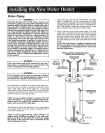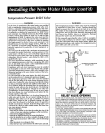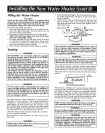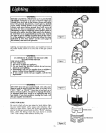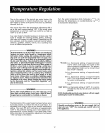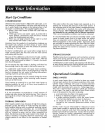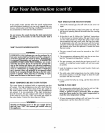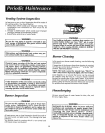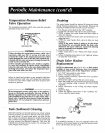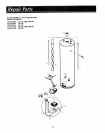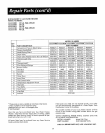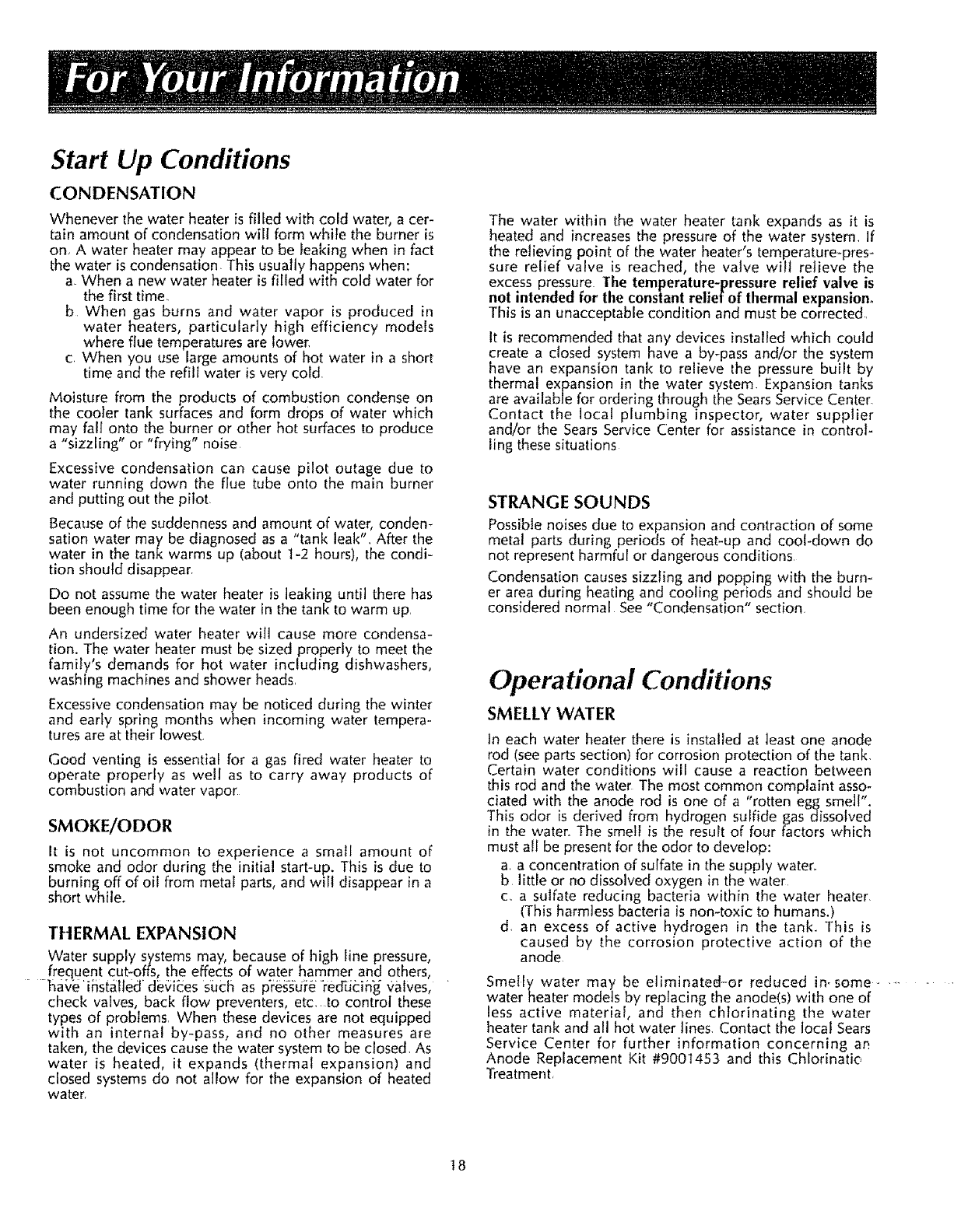
Start Up Conditions
CONDENSATION
Whenever the water heater is filled with cold water, a cer-
tain amount of condensation will form while the burner is
on. A water heater may appear to be leaking when in fact
the water is condensation. This usually happens when:
a. When a new water heater is filled with cold water for
the first time.
b When gas burns and water vapor is produced in
water heaters, particularly high efficiency models
where flue temperatures are lower.
c When you use large amounts of hot water in a short
time and the refill water is very cold.
Moisture from the products of combustion condense on
the cooler tank surfaces and form drops of water which
may fal[ onto the burner or other hot surfaces to produce
a "sizzling" or "frying" noise
Excessive condensation can cause pilot outage due to
water running down the flue tube onto the main burner
and putting out the pilot.
Because of the suddenness and amount of water, conden-
sation water may be diagnosed as a "tank leak". After the
water in the tank. warms up (about I-2 hours), the condi-
tion should disappear_
Do not assume the water heater is leaking until there has
been enough time for the water in the tank to warm up.
An undersized water heater will cause more condensa-
tion. The water heater must be sized properly to meet the
family's demands for hot water including dishwashers,
washing machines and shower heads
Excessive condensation may be noticed during the winter
and early spring monti_s when incoming water tempera-
tures are at their lowesL
Good venting is essential for a gas fired water heater to
operate properly as well as to carry away products of
combustion and water vapor
SMOKE/ODOR
It is not uncommon to experience a small amount of
smoke and odor during the initial start-up. This is due to
burning off of oil from metal parts, and will disappear in a
short whiles
THERMAL EXPANSION
Water supply systems may, because of high line pressure,
frequent cut-offs, the effects of water hammer and others,
..... ha_,,ei_stalied de_i_es such as p're_u?e i-ecrdcihg"valves,
check valves, back flow preventers, etc_.to control these
types of problems. When these devices are not equipped
with an internal by-pass, and no other measures are
taken, the devices cause the water system to be closed, As
water is heated, it expands (thermal expansion) and
closed systems do not allow for the expansion of heated
water.
The water within the water heater tank expands as it is
heated and increases the pressure of the water system If
the relieving point of the water heater's temperature-pres-
sure relief valve is reached, the valve will relieve the
excess pressure ]'he temperature-pressure relief valve is
not intended for the constant relief of thermal expansion°
This is an unacceptable condition and must be corrected.
It is recommended that any devices installed which could
create a closed system have a by-pass and/or the system
have an expansion tank to relieve the pressure built by
thermal expansion in the water system. Expansion tanks
are available for ordering through the SearsService Center.
Contact the local plumbing inspector, water supplier
and/or the SearsService Center for assistance in control-
ling these situations
STRANGE SOUNDS
Possible noises due to expansion and contraction of some
metal parts during periods of heat-up and cool-down do
not represent harmfu Ior dangerous conditions
Condensation causes sizzling and popping with the burn-
er area during heating and cooling periods and should be
considered normal See"Condensation" section
Operational Conditions
SMELLY WATER
In each water heater there is installed at ]east one anode
rod (see parts section) for corrosion protection of the tank,
Certain water conditions will cause a reaction between
this rod and the water The most common complaint asso-
ciated with the anode rod is one of a "rotten egg smell".
This odor is derived from hydrogen sulfide gas dissolved
in the water, The smell is the result of four factors which
must all be present for the odor to develop:
a a concentration of sulfate in the supply water_.
b little or no dissolved oxygen in the water
c_ a sulfate reducing bacteria within the water heater,
(This harmless bacteria is non-toxic to humans.)
d an excess of active hydrogen in the tank This is
caused by the corrosion protective action of the
anode
Smelly water may be eliminated-or reduced in-some .....
water heater models by replacing the anode(s) with one of
less active material, and then chlorinating the water
heater tank and all hot water lines, Contact the local Sears
Service Center for further information concerning an
Anode Replacement Kit #9001453 and this Chlorinatic_
Treatment,
18



